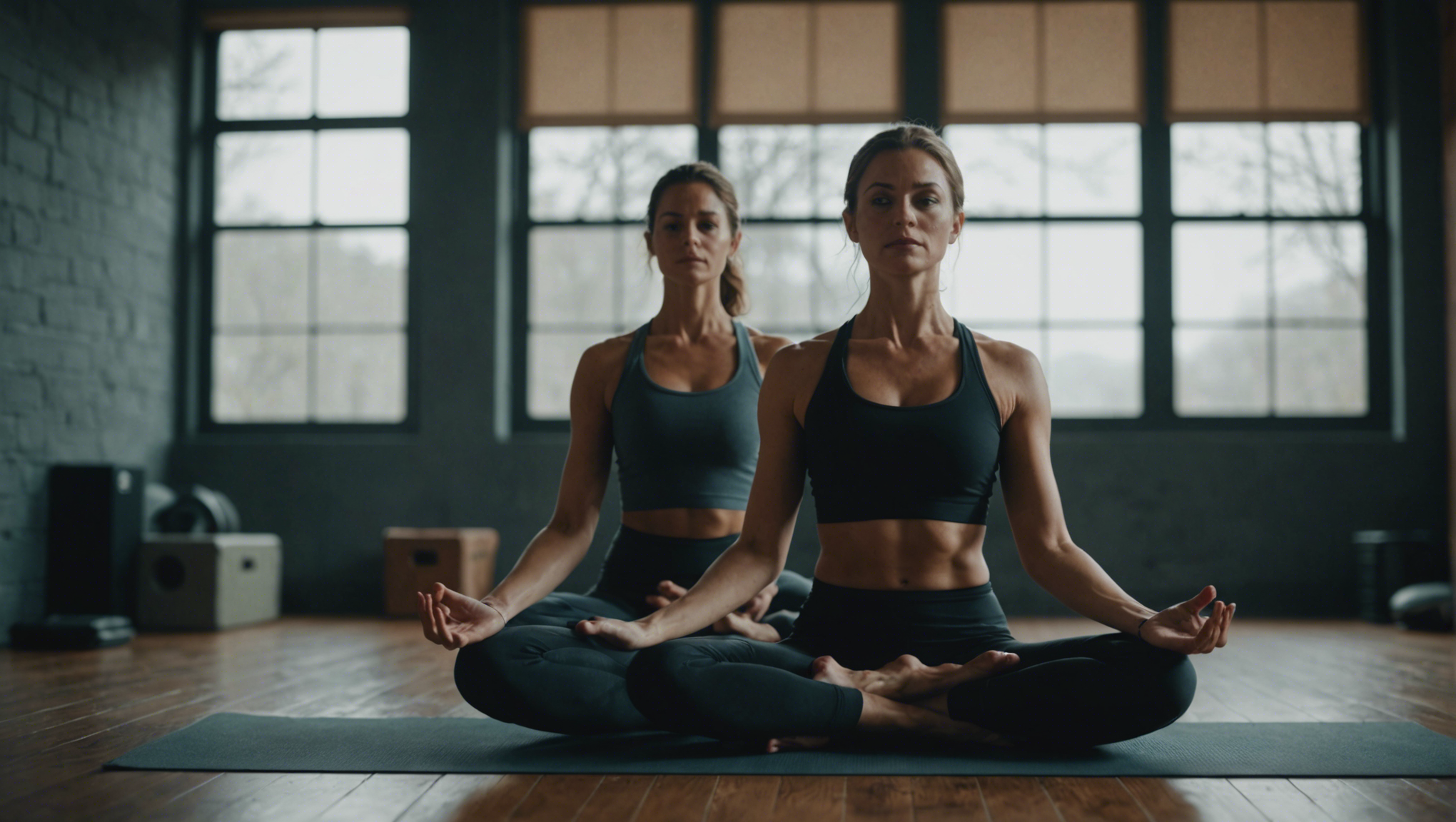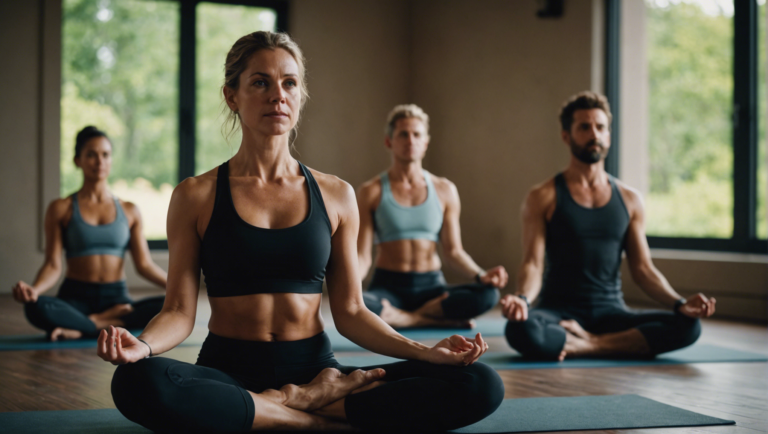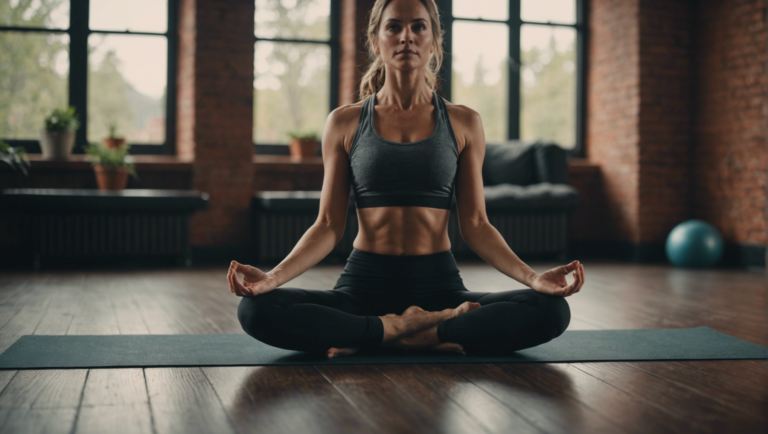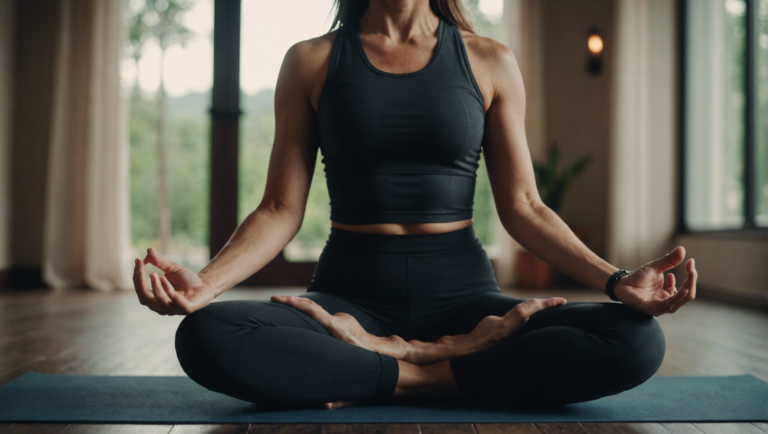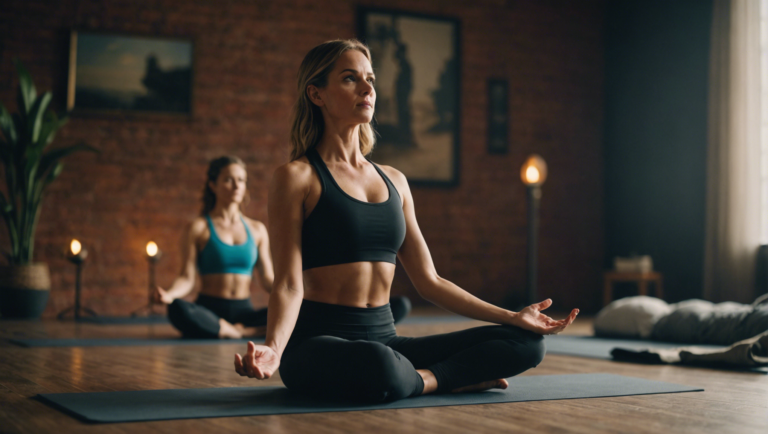Optimal Frequency Of Yoga For Enhanced Flexibility
Determining the Optimal Frequency of Yoga for Enhanced Flexibility
How Often Should You Practice Yoga for Improved Flexibility?
Flexibility is a cornerstone of physical fitness, akin to strength, endurance, and balance. It not only enhances performance in physical activities but also reduces the risk of injuries and improves overall mobility. Among the plethora of techniques to improve flexibility, yoga stands out as a holistic approach that nurtures the body, mind, and spirit. However, the question of how frequently one should engage in yoga to significantly boost flexibility remains a topic of interest for many.
The Impact of Regular Yoga Practice on Flexibility
Yoga, with its myriad poses and stretches, targets the body’s flexibility, gradually improving it over time. Each asana (pose) is designed to stretch different muscle groups, promoting a range of motion and enhancing elasticity in the muscles and ligaments. Regular practice is crucial, as flexibility gains are incremental and require consistency.
Weekly Yoga Sessions: A Guideline for Beginners
For beginners, navigating the path to enhanced flexibility through yoga can be daunting. A common recommendation is to start with two to three sessions per week, each lasting between 60 to 90 minutes. This frequency allows the body to acclimate to the new stretches and poses without overwhelming it, avoiding the risk of injury that may come with daily intense sessions.
Advancing Your Practice: The Route to Daily Yoga
As one progresses, advancing to more frequent sessions becomes beneficial. An ideal approach to yoga for enhanced flexibility is to gradually increase the frequency of practice, aiming for daily sessions. This doesn’t necessarily mean performing intense yoga workouts every day; rather, it includes integrating lighter practices or specific stretches on alternate days to maintain and gradually improve flexibility.
The Role of Yoga Styles in Flexibility Improvement
Not all yoga styles contribute to flexibility in the same way. Vinyasa and Ashtanga yoga, known for their dynamic and physical intensity, can be more beneficial for building flexibility than more restful practices like Yin yoga. However, incorporating a variety of styles can provide a balanced approach, targeting flexibility alongside strength and meditation for overall well-being.
Listen to Your Body: The Key to Optimal Frequency
While guidelines suggest a frequency for practicing yoga, it is paramount to listen to your body’s signals. Flexibility improvement varies individually, and what works for one person may not for another. Factors such as age, baseline flexibility, and even genetics play a role in how quickly and effectively one can enhance flexibility through yoga.
Integrating Rest and Recovery in Your Yoga Routine
Rest and recovery are as important as the practice itself. rest days or lighter yoga sessions into your routine allows your muscles to recover and rebuild, making them more supple and enhancing flexibility over time. This balanced approach prevents burnout and injuries, ensuring a sustainable and enjoyable yoga practice.
The Comprehensive Approach: Beyond the Mat
Enhancing flexibility through yoga extends beyond the practice hours on the mat. A holistic approach, incorporating a balanced diet, adequate hydration, and mindfulness practices, supports the physical changes and promotes a deeper connection with one’s body. This comprehensive approach ensures not only improved flexibility but also a harmonious balance between physical health and mental well-being.
Crafting Your Personalized Yoga Routine for Flexibility
Ultimately, determining the optimal frequency of yoga for enhanced flexibility is a personal journey. It involves a blend of understanding yoga principles, listening to one’s body, and being open to adjustments in your practice. Starting with the suggested guidelines and adaptively tailoring your yoga routine to suit your body’s responses will pave the way for significant improvements in flexibility, contributing to overall physical fitness and wellness.
Navigating the path to enhanced flexibility through yoga is a rewarding endeavor that transcends physical benefits, fostering a deeper connection with the self and promoting a holistic sense of well-being. Embrace the journey with patience and consistency, allowing the transformative power of yoga to unfold at your body’s unique pace.
The Relationship Between Yoga Practice Intensity and Flexibility Gains
Embarking on a yoga journey opens up a world of benefits, among which enhanced flexibility stands out prominently. However, the intensity and frequency of your practice directly influence the gains you can expect to see in your flexibility. This nuanced relationship deserves a deeper dive, exploring how different yoga practices and their intensities impact the body’s ability to become more flexible, and thus more resilient.
Understanding the Basics of Flexibility and Yoga
Flexibility refers to the ability of your muscles and tendons to stretch. Yoga, with its myriad poses and stretches, acts directly on improving this aspect of physical fitness. Yet, not all yoga practices are created equal when it comes to enhancing flexibility. The type of yoga, the duration of individual sessions, and the overall frequency of practice play crucial roles in determining the magnitude of flexibility gains.
The Role of Practice Intensity
The intensity of a yoga session can be perceived through the complexity and physical demand of the poses, the duration of holds, and the overall pace of the class. High-intensity practices like Ashtanga or Power Yoga, focusing on strength and endurance alongside flexibility, might offer rapid gains in flexibility for some practitioners. However, for others, especially beginners or those with limited flexibility, a gentler, less intense style like Hatha or Yin Yoga, which focuses more on slow movements and longer holds, could be more beneficial.
Optimal Frequency for Maximum Gains
Finding the optimal frequency of practice is essential for harnessing the full potential of yoga to improve flexibility. Practicing too infrequently may stall progress, while overdoing it can lead to fatigue or injury, hampering flexibility gains. A balanced schedule, for most individuals, consists of 3-5 yoga sessions per week. This frequency allows the body time to recover and adapt to the stretches, leading to improvements in flexibility.
Listening to Your Body
An often-overlooked aspect of yoga practice is the importance of listening to your body. Flexibility gains can be significantly enhanced when individuals pay close attention to their bodies’ signals, adjusting the intensity and frequency of their practice accordingly. For instance, if experiencing soreness or fatigue, it may be wise to opt for a gentler practice or allow an extra day for recovery.
Long-Term Commitment and Incremental Progress
Flexibility gains through yoga require a long-term commitment. Incremental progress, rather than immediate results, should be the focus. Regular practice over months and years yields the most significant improvements in flexibility. This long-term approach also offers the added benefit of reducing the risk of injuries and ensuring that the flexibility gains are sustainable.
The Interplay Between Mind and Body
Yoga’s benefits on flexibility extend beyond the physical to the mental and emotional realms. The mindfulness and meditative aspects of yoga practice contribute to a more profound connection with one’s body. This enhanced mind-body connection can further improve flexibility by reducing stress and tension, which often limit physical mobility.
Personalization is Key
It’s vital to remember that each individual’s body is unique, and what works for one person may not for another. Personalizing one’s yoga practice, possibly with the assistance of a knowledgeable instructor, can ensure that the practice intensity and frequency are optimally aligned with personal flexibility goals.
Embarking on a yoga journey with a balanced and informed approach to practice intensity and frequency can lead to substantial improvements in flexibility. Such a journey not only enhances physical mobility but also promotes an overall sense of well-being, illustrating the profound interconnection between the physical, mental, and spiritual aspects of our beings. As practitioners tune into their bodies and adjust their practices to suit their individual needs, the journey towards greater flexibility can also become a path of self-discovery and personal growth.
Essential Yoga Poses for Maximum Flexibility Improvement
Embarking on a journey toward enhanced flexibility through yoga unveils a path filled with myriad benefits, not just for the body but also for the mind and spirit. To truly maximize the benefits of yoga for improving flexibility, understanding and practicing specific poses is essential. These poses, when performed regularly and with proper form, can significantly increase your range of motion, reduce stiffness, and alleviate muscle tension. Below, we delve into the essential yoga poses that are pivotal in achieving maximum flexibility improvement.
Unlocking the Power of Forward Bends
Seated Forward Bend (Paschimottanasana)
The Seated Forward Bend is a quintessential pose that works wonderously in stretching the hamstrings, spine, and lower back. Regular practice of this pose not only enhances flexibility but also calms the mind and relieves stress. It’s advised to maintain a straight back as much as possible while bending forward to deepen the stretch without compromising the form.
Standing Forward Fold (Uttanasana)
This pose acts as a therapeutic balm for the entire back, providing an excellent stretch to the hamstrings, calves, and hips. The gravitational pull in the Standing Forward Fold aids in decompressing the spine, offering a sense of release and relaxation. Beginners may slightly bend their knees to make the pose more accessible.
The Essence of Hip Openers
Pigeon Pose (Eka Pada Rajakapotasana)
Renowned for its profound hip-opening capabilities, the Pigeon Pose stretches the hip flexors, groin, and glutes. This pose is particularly beneficial for those who lead a sedentary lifestyle or spend long hours sitting. It promotes flexibility in the lower body and can contribute to alleviating lower back pain.
Butterfly Pose (Baddha Konasana)
The Butterfly Pose is another vital hip opener that specifically targets the inner thighs, groin, and knees. It’s an excellent pose for improving flexibility in the hips and the lower part of the body. The Butterfly Pose also aids in digestive health and can be remarkably soothing for menstrual discomfort.
Strengthening the Spine with Backbends
Cobra Pose (Bhujangasana)
Backbends are pivotal for a flexible spine, and the Cobra Pose is a gentle yet effective way to start. It strengthens the spine, opens the chest, and improves the flexibility of the thoracic spine. The Cobra Pose is also known to stimulate abdominal organs, enhancing the body’s digestive function.
Camel Pose (Ustrasana)
For those looking to deepen their backbend practice, the Camel Pose offers an intense stretch for the entire front of the body, from the quadriceps up through the pectorals. By opening up the thoracic spine, shoulders, and neck, it not only enhances spinal flexibility but also aids in improving posture.
Embracing the Twist for Core Flexibility
Seated Spinal Twist (Ardha Matsyendrasana)
Twisting poses, such as the Seated Spinal Twist, are excellent for increasing spinal flexibility and stimulating digestion. This pose offers the advantage of stretching the shoulders, hips, and neck, while the twisting action helps in detoxifying the internal organs.
Lord of the Fishes Pose (Matsyendrasana)
A more advanced twist, the Lord of the Fishes Pose, stretches the spine, shoulders, and hips more intensely. It’s crucial to engage the core for stability and to ensure that the twist originates from the base of the spine to maximize the benefits of this pose.
Engaging in these essential yoga poses with consistency and mindful attention to form will significantly propel your journey towards achieving maximum flexibility. It’s important to listen to your body and modify poses as necessary to accommodate your level of flexibility. Integrating these poses into your regular yoga practice not only opens the door to improved flexibility but also invites a myriad of holistic benefits that can enrich your overall wellbeing. Remember, the path to flexibility is a journey, not a destination, and every small progress is a step forward in your yoga practice.
Customizing Your Yoga Routine for Flexibility Based on Your Fitness Level
Crafting a yoga routine tailored to your current fitness level, especially with a focus on enhancing flexibility, presents a unique opportunity to achieve personal health and wellness goals efficiently. Understanding how to adjust your yoga practice to suit your needs can significantly influence your progress, ensuring a satisfying journey toward improved flexibility, strength, and overall well-being.
Evaluating Your Current Fitness and Flexibility Level
Before embarking on a yoga journey aimed at enhancing flexibility, it’s crucial to assess your current fitness and flexibility level. This evaluation will guide you in selecting appropriate yoga styles and poses that align with your body’s capabilities and limitations, minimizing the risk of injury and maximizing benefits. Start by observing your daily movement patterns, noting any stiffness, discomfort, or limitations. Consider consulting with a yoga instructor or healthcare professional to gain deeper insights and recommendations.
Selecting Yoga Styles for Flexibility
Yoga offers a plethora of styles, each with unique benefits, intensities, and focuses. For beginners or those with limited flexibility, gentler forms of yoga such as Hatha or Yin can provide a solid foundation, emphasizing slow movements, longer holds, and deep stretches. As your flexibility improves, incorporating more dynamic styles like Vinyasa or Ashtanga can challenge your body in new ways, promoting further gains in flexibility and strength. Listen to your body and adjust your practice accordingly, ensuring a balance between comfort and challenge.
Frequency and Duration of Practice
The frequency and duration of your yoga practice play pivotal roles in achieving optimal results. Starting with shorter sessions, approximately 20-30 minutes, three times a week, can help your body gradually adapt to the new demands. As you progress, aim to increase both the duration and frequency of your practice, targeting 45-60 minutes, four to five times a week for more substantial improvements in flexibility. Remember, consistency is key; it’s better to practice regularly for shorter periods than to have infrequent, longer sessions.
Variety and Challenge
To avoid plateaus and continue making progress in flexibility, it’s essential to introduce variety and incremental challenges into your yoga routine. Experimenting with different poses and sequences can provide a comprehensive stretch to all body parts, reducing the risk of overuse injuries and enhancing overall flexibility. Challenge yourself by gradually incorporating more advanced poses as your flexibility and confidence improve, always paying attention to proper alignment and breathing techniques to optimize benefits.
Rest and Recovery
Rest and recovery are integral components of a successful yoga practice focused on flexibility. Allow your body time to repair and adapt by incorporating rest days or practicing restorative yoga styles that focus on relaxation and deep stretching without intense effort. Listening to your body and respecting its limits can prevent overtraining and ensure a balanced approach to improving flexibility.
Tracking Progress and Adjusting Goals
Documenting your yoga journey through regular assessments or journaling can motivate you and provide tangible evidence of your progress. Celebrate small victories and adjust your goals as your flexibility improves, setting higher standards in a realistic and healthy manner. Remain patient and persistent, understanding that flexibility gains can be gradual and vary greatly from one individual to another.
The Role of Mindfulness and Consistency
Embedding mindfulness into your yoga practice can enhance the experience and benefits. Focus on the present moment, observing the sensations in your body without judgment, to deepen the connection between mind and body. Consistency in practice, combined with a mindful approach, will yield the best results, transforming your yoga routine into a powerful tool for enhancing flexibility based on your fitness level.
By strategically customizing your yoga routine to align with your fitness and flexibility level, incorporating appropriate styles, frequency, and variety, and emphasizing rest and mindfulness, you can effectively enhance your flexibility. This personalized approach not only maximizes the benefits of yoga but also ensures a sustainable and enjoyable path toward achieving your health and wellness goals.
The Role of Rest and Recovery in Achieving Flexibility Through Yoga
Understanding the Integral Role of Rest and Recovery
When embarking on a journey to enhance flexibility through yoga, the significance of rest and recovery often remains overshadowed by the emphasis on active practice. Yet, these elements are cornerstones in achieving optimal flexibility, warranting a deeper exploration into how they contribute to a well-rounded yoga routine.
The Science Behind Rest in Yoga Practice
Yoga, a discipline known for its harmonious blend of physical postures, breathing techniques, and meditation, has long been celebrated for its ability to improve flexibility, strength, and mental clarity. However, the physiological improvements, especially in flexibility, are maximally realized when the body is allowed to rest and recover properly.
Muscle recovery post-yoga is vital because it is during this time that the body repairs and strengthens itself. When yoga poses stretch the muscles, they create tiny tears in the muscle fibers. It is the healing of these micro-tears during rest periods that results in stronger and more flexible muscles. Without adequate rest, these micro-tears can lead to muscle fatigue and strain rather than strength and flexibility.
The Impact of Recovery on Flexibility Gains
Recovery in the context of yoga does not solely mean taking days off. It also encompasses active recovery practices such as gentle yoga flows, yin yoga, and restorative yoga, which focus on gentle stretching and relaxation without putting strain on the muscles. These practices facilitate blood flow to the muscles, helping in quicker recovery and removal of metabolic waste products accumulated during intense practice.
Moreover, recovery practices aid in enhancing flexibility as they allow the body to adapt to the stretches and poses without the risk of injury. They give the body time to assimilate the benefits of more intense yoga sessions, leading to greater flexibility over time.
Balancing Practice with Rest
Achieving a balance between active yoga practice and rest is crucial for enhancing flexibility. Engaging in daily intensive yoga can be counterproductive, as it does not give the muscles the necessary time to recover and grow stronger. Instead, alternation between days of intense flexibility-focused practices and days dedicated to rest or gentle yoga can yield better results.
A balanced routine might look like three to four days of active yoga practice focused on improving flexibility, interspersed with one to two days of restorative or gentle yoga, and at least one day of complete rest. This schedule not only prevents overtraining but also supports ongoing flexibility improvements.
Listening to Your Body
The paramount principle in yoga is to be in tune with your body’s needs and limits. This mindfulness should extend to recognizing when your body needs rest. Signs of overtraining, such as prolonged muscle soreness, fatigue, and decreased performance, indicate the need for more rest and recovery time.
Adjusting your yoga practice based on how your body feels is essential. On days when you feel more fatigued, opting for a gentle or restorative yoga session rather than pushing through an intensive practice can be more beneficial in the long term for enhancing flexibility.
Rest and recovery are not merely passive intervals in the pursuit of increased flexibility through yoga; they are an active and essential component of the process. By allowing the body time to repair and strengthen, embracing restorative practices, and listening to the body’s cues, yogis can achieve greater flexibility gains. This holistic approach to yoga practice underscores the importance of balance, not just in physical postures but in the overall regimen, ensuring sustainable progress and well-being for the mind, body, and spirit.
Conclusion
Embarking on the quest for enhanced flexibility through yoga presents a tailored journey, distinct in its approach for every individual, yet unified in its core essence of holistic well-being. Within the realms of yoga, the discovery of an optimal frequency is not a one-size-fits-all solution but rather a personalized endeavor, intricately tied to one’s own physical capacities, lifestyle, and wellness goals. This exploration into yoga’s multifaceted dimensions reveals a profound connection between the regularity and intensity of practice and the tangible gains in flexibility, underscoring the imperative of striking a harmonious balance that resonates with the practitioner’s unique bodily needs and aspirations.
The symbiotic relationship between yoga practice intensity and the enhancements in flexibility is underpinned by a nuanced understanding that more isn’t always better; rather, it is the quality, consistency, and mindfulness of the practice that pave the way for profound flexibility improvements. Delving into the specifics, essential yoga poses emerge as the linchpins of a flexibility-oriented regimen, with each asana meticulously selected and sequenced to target key muscle groups, fostering a gradual and sustainable expansion of one’s range of motion. The strategic incorporation of poses tailored for maximal flexibility improvement illustrates the transformative power of yoga when engaged with intentionality and awareness.
Customization of one’s yoga routine is akin to sculpting a masterpiece, wherein the canvas of our bodies is gently and expertly molded to reach new echelons of flexibility. This customization hinges on an astute awareness of one’s current fitness level, diligently adapting the practice to meet the individual right where they are, thus ensuring a progressively challenging yet accessible path to heightened flexibility. This approach not only cultivates a deeper connection to one’s body but also empowers the practitioner to navigate their yoga journey with autonomy, adaptability, and grace.
Integral to this journey is the pivotal role of rest and recovery, serving as the foundational pillars that support and reinforce the gains achieved through dedicated practice. In the pursuit of flexibility, the significance of allowing the body time to rejuvenate cannot be overstated, with rest days emerging as crucial components of a well-rounded yoga regimen. This deliberate inclusion of recovery time underscores the holistic ethos of yoga, where the cultivation of patience, acceptance, and mindfulness is as paramount as the physical practice itself.
Within the tapestry of these themes lies the essence of a yoga practice designed for enhanced flexibility—a practice characterized by intentional frequency, mindful intensity, strategic pose selection, personalization, and the wisdom to rest. This holistic approach not only fosters significant improvements in flexibility but also encapsulates the profound beauty of yoga as a journey of self-discovery, growth, and transformation.
As practitioners navigate this path, it becomes evident that the journey towards enhanced flexibility through yoga transcends the physical realm, weaving into the fabric of one’s being a deeper sense of awareness, harmony, and connection to self. In embracing this journey, each individual is invited to listen attentively to the whispers of their body, cultivating a practice that is as nurturing as it is challenging, and as personalized as it is universally grounded in the ancient wisdom of yoga.
Thus, the exploration of yoga as a means to achieve enhanced flexibility is, in essence, a journey towards a more attuned, flexible, and harmonious existence. It is a testament to the transformative power of yoga, not only as a physical practice but as a way of life—a guiding light towards a state of well-being that resonates with the fluidity, strength, and grace inherent in every breath and movement.
